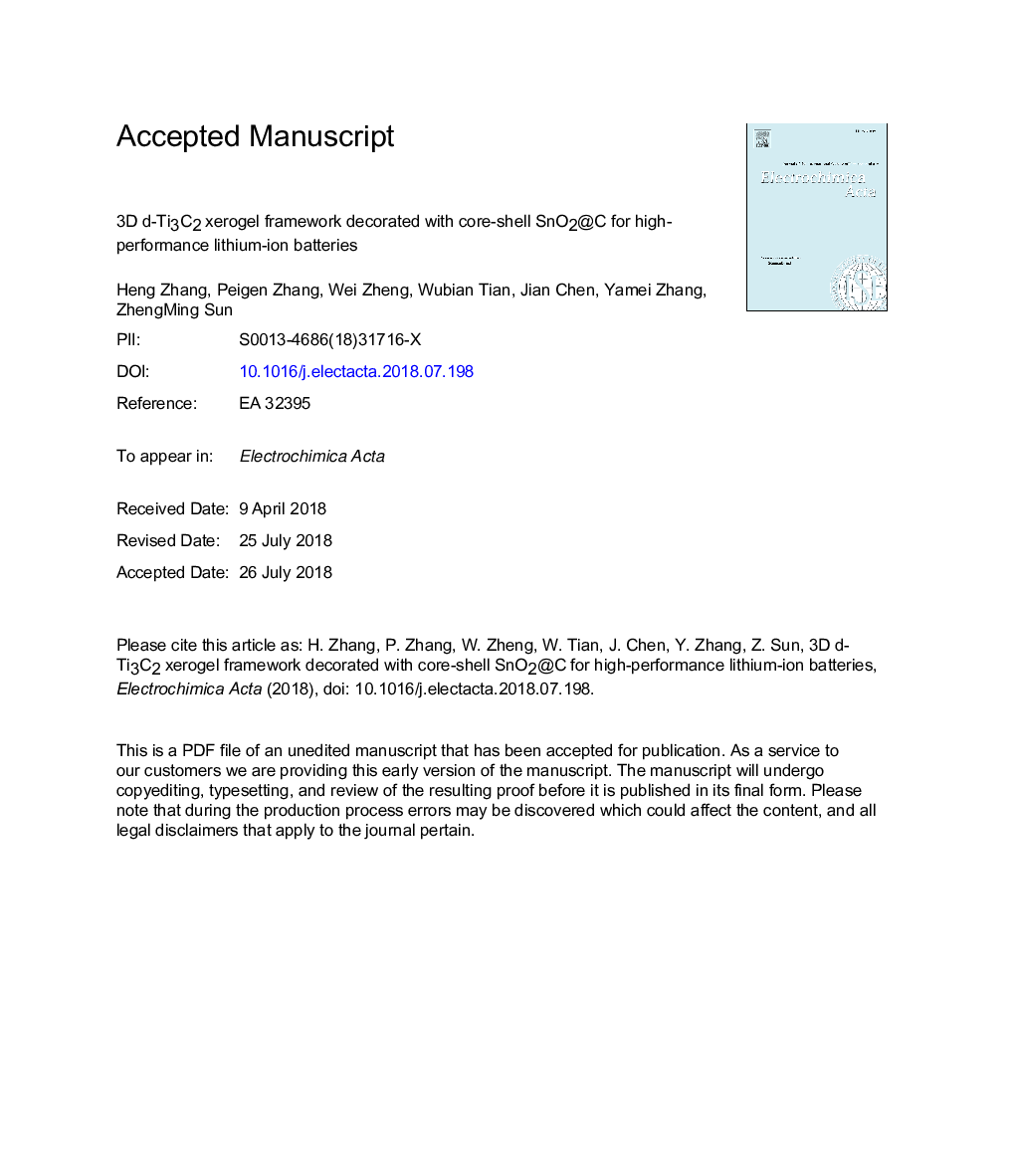| Article ID | Journal | Published Year | Pages | File Type |
|---|---|---|---|---|
| 6601785 | Electrochimica Acta | 2018 | 22 Pages |
Abstract
Three-dimensional (3D) delaminated-Ti3C2 (d-Ti3C2) xerogel framework decorated with core-shell SnO2@C nanoparticles is constructed via PVA-assisted sol-gel process, in which SnO2@C nanoparticles are synthesized by one-step hydrothermal route and then encapsulated into d-Ti3C2 framework. Remarkable improvement in the electrochemical performances as the lithium-ion batteries (LIBs) anode is achieved. Typically, the SnO2@C/d-Ti3C2 xerogel framework delivers a high initial capacity (1314â¯mAâ¯hâ¯gâ1) and a reversible specific capacity up to 520â¯mAâ¯hâ¯gâ1 after 1000 charge-discharge cycles at 1.0â¯Aâ¯gâ1. Furthermore, even at 10â¯Aâ¯gâ1, it still achieves a reversible specific capacity of 205.6â¯mAâ¯hâ¯gâ1, with a discharge capacity of 169â¯mAâ¯hâ¯gâ1 and a coulombic efficiency of 99.5% after 1000 cycles. Such excellent electrochemical performances are attributed to the synergistic effect between core-shell SnO2@C and 3D d-Ti3C2 conductive network: (i) the core-shell structure suppresses the pulverization of SnO2 during the Li insertion/extraction process, and (ii) the interconnected 3D MXene framework establishes a good conductive pathway for fast lithium ions diffusion and quick charge transfer.
Related Topics
Physical Sciences and Engineering
Chemical Engineering
Chemical Engineering (General)
Authors
Heng Zhang, Peigen Zhang, Wei Zheng, Wubian Tian, Jian Chen, Yamei Zhang, ZhengMing Sun,
